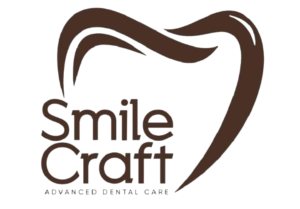Clear Aligners (Braces)
Clear Aligners (also known as invisible braces) are transparent trays made of special material which are used to straighten teeth just like braces. They use gentle and constant force to move the teeth in the required position without going through the hassles of metal wires and brackets. They are custom made for each patient through a digital scan
HOW DO THEY WORK?
They are custom made for every person and designed to move teeth in the desired direction very very slowly. This is achieved by digitally capturing impression and processing the information using specialized software, where the future projections for better results and straighter teeth are computed and then the milling machine automatically custom fabricates the set of trays for you. On average, aperson needs approximately 25-40 sets for complete alignment.
The clear aligners or invisible braces come with an advantage i.e. they are very snugly fitting which over a period becomes virtually a part of the body and hence causes no speech problems. There are no restrictions on eating and drinking any foods as you will be removing them before every meal.

- Retain your smile with Retainer – Just because you’ve got your teeth straightened does not necessarily mean that it will stay straight throughout. Your Orthodontist might advise retainers which will prevent your teeth to shift back to their previous location
- Take care of your food habits – It may so happen that your teeth are sensitive after the treatment, therefore, it is advised to not consume, too crunchy food for a few days. Let your smile rest before going back to the crunchy munchy snacks
- Do not forget to brush – Keep up your habit of brushing twice a day and flossing in order to keep your teeth clean and healthy. Not taking good care of your oral hygiene will let the treatment go in vain.
- Visit your dentist – Because you are done with your treatment and have got that perfect smile you always desired for does not mean that you need not visit the dentist ever. Always visit a dentist after every 6 months to ensure that this smile remains intact.
What are braces?
Dental braces straighten your teeth and correct a wide range of orthodontic issues, such as:
Crooked teeth.
Crowded teeth.
Gapped teeth.
Malocclusion (issues with the way your teeth fit together)
How do braces work?
Braces use mild, constant pressure to shift your teeth into their proper positions over time. The exact way this happens depends on the type of braces you choose.
What are the types of braces? There are several different types of braces. The type that’s best for you depends on a few factors, including the kind of issue you have, the severity of your condition and your personal preferences.
- Metal braces
When you think of braces, traditional metal braces might be what you imagine. Metal braces use stainless steel bands, brackets and wires to gently shift your teeth over time.
A dentist or orthodontist will bond (glue) a bracket on each tooth, then place a thin, flexible archwire over the brackets. Tiny elastic bands called ligatures keep the wire firmly in place.
Metal braces are visible when you smile.
You can choose clear or tooth-colored ligatures to make your braces less noticeable. Or, if you’re feeling festive, you can choose brightly colored ligatures.
- Ceramic braces Ceramic braces – sometimes called clear braces work the same way as metal braces. The key difference is that the brackets, wires and ligatures are tooth- colored, so they blend in with your smile. Ceramic braces are still visible, but they’re less noticeable. One drawback to ceramic braces is that they’re more fragile than metal braces, so they’re more likely to break.
- Lingual braces
Lingual braces are similar to traditional braces. But they go on the back surfaces of your teeth instead of the front. Mostpeople who choose lingual braces do so because they don’t want other people to be able to tell they have braces.
Self-ligating braces Self-ligating braces look similar to traditional metal braces. The main difference is that, instead of ligatures (tiny elastic bands), self-ligating braces use a built-in system to hold the archwire in place.

